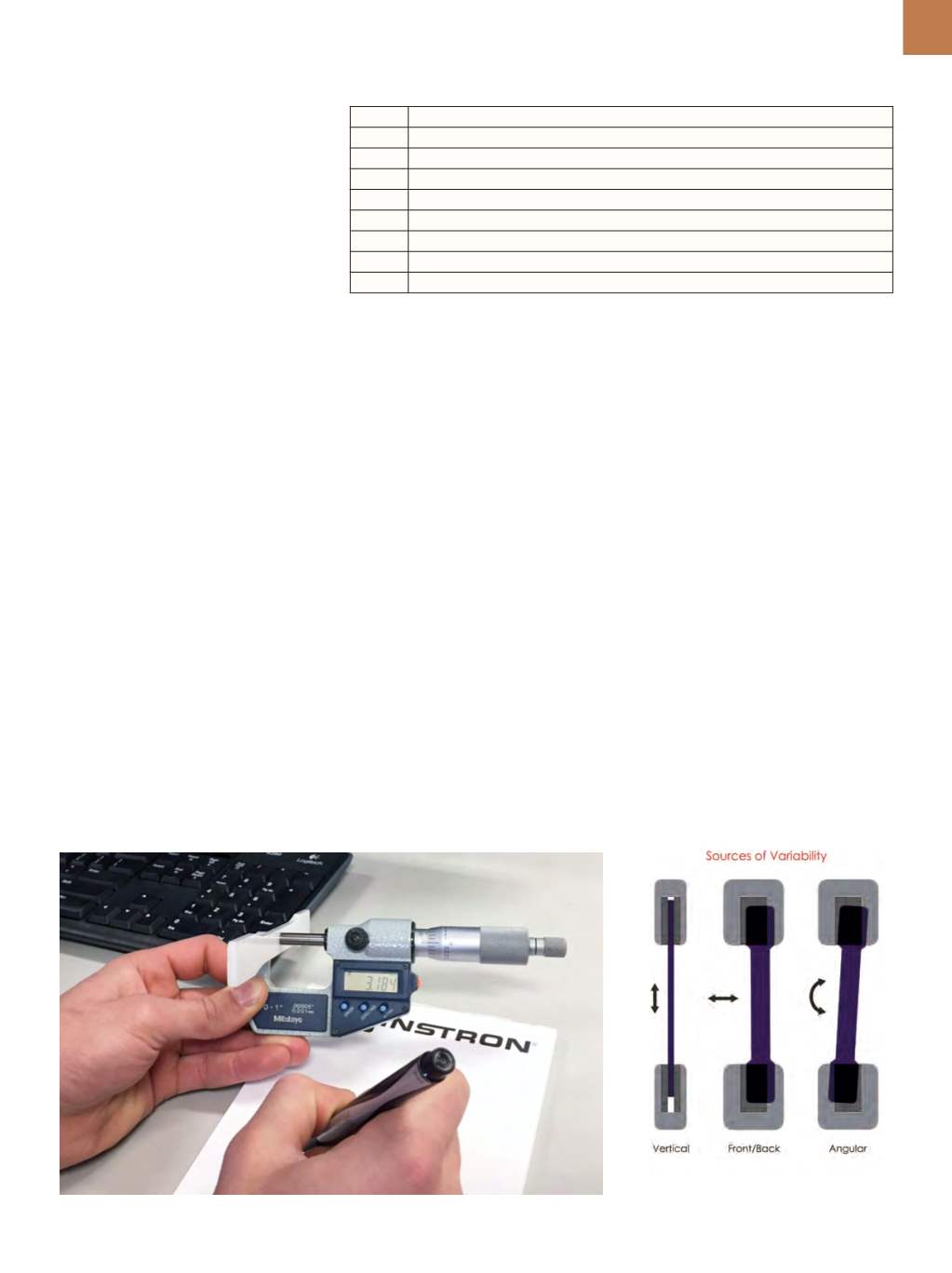

A D V A N C E D
M A T E R I A L S
&
P R O C E S S E S |
N O V E M B E R / D E C E M B E R
2 0 1 5
1 9
A
utomation is commonly used in
everyday life. For example, au-
tomatic doors at retail stores,
car windows, ticket and toll booths,
electronic devices, and online banking
are among the many forms of automa-
tion that make life more convenient.
Despite this, there is resistance to us-
ing automation in mechanical testing
scenarios. With regard to lab automa-
tion in particular, common objections
include worries about equipment cost,
the time and difficulty of training op-
erators, and the belief that automated
systems are inflexible when changes
are required.
Despite these fears, automation of-
fers many key advantages in mechanical
testing. For example, it reduces retesting
due to data entry errors and failed tests,
resulting in quicker go/no-go decisions
for end users. Automation also offers
a better use of skilled labor. Instead of
spending time loading testing machines
or waiting for tests to finish, operators
can work on more valuable tasks. Com-
panies using automation will see an
increase in testing efficiency because it
allows testing laboratories to keep up
with increased testing demands with-
out additional personnel, as automation
can run overnight and on weekends un-
attended, increasing throughput. Auto-
mation also improves personnel safety,
reduces repetitive motion injuries, and
keeps operators clear of testing equip-
ment and moving machinery.
TABLE 1 —TYPICAL TESTING CYCLE
Step 1 Specimen ID or batch is entered by operator.
Step 2 Specimen is measured, usually in three places.
Step 3 Specimen information is manually entered into software.
Step 4 Specimen is loaded into grips.
Step 5 An extensometer is attached to the specimen (if necessary).
Step 6 Test is initiated by operator.
Step 7 Operator waits for a test to complete.
Step 8 Specimen is removed from grips.
Step 9 Operator manually transfers results to the database.
MANUAL TESTING PROCESS
Many manual and tedious steps
are involved in a typical testing cycle
(Table 1). All of these steps take valuable
operator time, and many can potential-
ly introduce errors and variability that
might create more work due to retest-
ing. Performing manual measurements
is time consuming and cumbersome,
which can lead to errors—numbers can
be written incorrectly, transposed, or
forgotten. In fact, some testing labs re-
port measurement processes consum-
ing as much as one-third of their testing
process time (Fig. 1).
Loading specimens into testing
equipment is operator-dependent and
can have a big impact on results. This
process also presents multiple oppor-
tunities for errors because specimens
can easily be loaded incorrectly—too
high, too low, off center, or at an angle.
For example, consider two operators
testing the same batch of specimens.
Fig. 1 —
Manual measurement performance is time consuming and often leads to errors.
Operator A tends to test on the high
side. While most of the testing stays
within the product limits, occasion-
ally results are out of range and good
product is not shipped. On the other
hand, Operator B tends to test on the
low side. Again, most of the values stay
within product limits, but occasionally,
due to lower limit testing, some prod-
uct that should actually be rejected
unfortunately passes and bad product
is shipped. It all depends on the oper-
ator’s technique, and the difference
between operators could result in both
lower quality and higher costs (Fig. 2).
One of the final steps in the testing
process, and likely the most crucial, is
transferring testing results into a LIMS
or master database for analysis, track-
ing, and to make important product
decisions. Similar to manual entry of
information at the beginning of the
testing process, manual results entry is
time consuming and increases variabil-
ity and errors.
Fig. 2 —
Loading specimens into testing
equipment can easily be done incorrectly—
too high or too low, off-center, or at an angle.


















